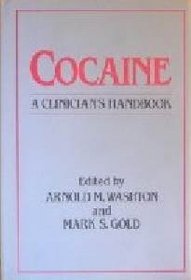Search -
Cocaine: A Clinician's Handbook
Cocaine A Clinician's Handbook
Cocaine abuse appears to have grown from a relatively minor problem in the sixties and seventies to a major health problem today. Now, more than ever, there is a need for truly complete, up-to-date coverage of the broad range of cocaine related issues facing today's practitioners. — COCAINE: A CLINICIAN'S HANDBOOK is the first comprehensive refe... more »
Cocaine abuse appears to have grown from a relatively minor problem in the sixties and seventies to a major health problem today. Now, more than ever, there is a need for truly complete, up-to-date coverage of the broad range of cocaine related issues facing today's practitioners. — COCAINE: A CLINICIAN'S HANDBOOK is the first comprehensive refe... more »
ISBN-13: 9780898627251
ISBN-10: 0898627257
Publication Date: 6/8/1987
Pages: 262
Rating: ?
ISBN-10: 0898627257
Publication Date: 6/8/1987
Pages: 262
Rating: ?
0 stars, based on 0 rating
Genres:
- Health, Fitness & Dieting >> Addiction & Recovery >> Drug Dependency
- Health, Fitness & Dieting >> Addiction & Recovery >> Substance Abuse
- Health, Fitness & Dieting >> Psychology & Counseling >> General
- Health, Fitness & Dieting >> Psychology & Counseling >> Psychotherapy, TA & NLP
- Medicine >> Specialties >> Psychiatry >> General
- Medicine >> Internal Medicine
- Medical Books >> Medicine >> Internal Medicine >> Psychiatry
- Medical Books >> Pharmacology >> Neuropsychopharmacology




